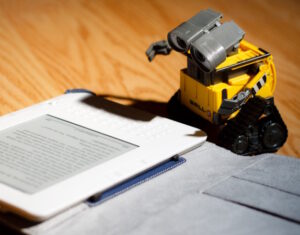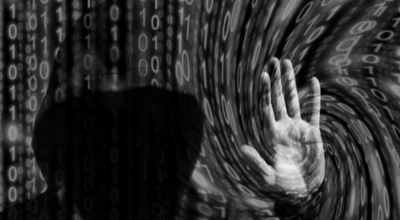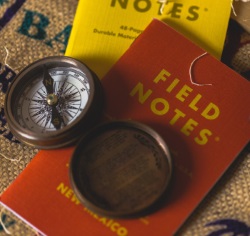
Michael Brian Schiffer is perhaps best-known (amongst archaeologists of a certain age in the UK at least), for his development of behavioural archaeology, which looked at the changing relationships between people and things as a response to the processual archaeology of Binford et al. (Schiffer 1976; 2010), and for his work on the formation processes of the archaeological record (Schiffer 1987). But Schiffer also has an extensive track record of work on archaeological (and behavioural) approaches to modern technologies and technological change (e.g., Schiffer 1992; 2011) which receives little attention in the digital archaeology arena, in part because despite his interest in a host of other electrical devices involved in knowledge creation (e.g., Schiffer 2013, 81ff) he has little to say about computers beyond observing their use in modelling and simulation or as an example of an aggregate technology constructed from multiple technologies and having a generalised functionality (Schiffer 2011, 167-171).
In his book The Archaeology of Science, Schiffer introduces the idea of the ‘discovery machine’. In applying such an apparatus,



 In recent years, digital access to unpublished archaeological reports (so-called ‘grey literature’) has become increasingly transformational in archaeological practice. Besides being important as a reference source for new archaeological investigations including pre-development assessments (the origin of many of the grey literature reports themselves), they also provide a resource for regional and national synthetic studies, and for automated data mining to extract information about periods of sites, locations of sites, types of evidence, and so on. Despite this, archaeological grey literature itself has not yet been closely evaluated as a resource for the creation of new archaeological knowledge. Can the data embedded within the reports (‘grey data’) be re-used in full knowledge of their origination, their strategies of recovery, the procedures applied, and the constraints experienced? Can grey data be securely repurposed, and if not, what measures need to be taken to ensure that it can be reliably reused?
In recent years, digital access to unpublished archaeological reports (so-called ‘grey literature’) has become increasingly transformational in archaeological practice. Besides being important as a reference source for new archaeological investigations including pre-development assessments (the origin of many of the grey literature reports themselves), they also provide a resource for regional and national synthetic studies, and for automated data mining to extract information about periods of sites, locations of sites, types of evidence, and so on. Despite this, archaeological grey literature itself has not yet been closely evaluated as a resource for the creation of new archaeological knowledge. Can the data embedded within the reports (‘grey data’) be re-used in full knowledge of their origination, their strategies of recovery, the procedures applied, and the constraints experienced? Can grey data be securely repurposed, and if not, what measures need to be taken to ensure that it can be reliably reused? One of the features of the world-wide COVID-19 pandemic over the past eighteen months has been the significance of the role of data and associated predictive data modelling which have governed public policy. At the same time, we have inevitably seen the spread of misinformation (as in false or inaccurate information that is believed to be true) and disinformation (information that is known to be false but is nevertheless spread deliberately), stimulating an infodemic alongside the pandemic. The ability to distinguish between information that can be trusted and information which can’t is key to managing the pandemic, and failure to do so lies behind many of the surges and waves that we have witnessed and experienced. Distinguishing between information and mis/disinformation can be difficult to do. The problem is all too often fuelled by algorithmic amplification across social media and compounded by the frequent shortage of solid, reliable, comprehensive, and unambiguous data, and leads to expert opinions being couched in cautious terms, dependent on probabilities and degrees of freedom, and frustratingly short on firm, absolute outcomes. Archaeological data is clearly not in the same league as pandemic health data, but it still suffers from conclusions drawn on often weak, always incomplete data and is consequently open to challenge, misinformation, and disinformation.
One of the features of the world-wide COVID-19 pandemic over the past eighteen months has been the significance of the role of data and associated predictive data modelling which have governed public policy. At the same time, we have inevitably seen the spread of misinformation (as in false or inaccurate information that is believed to be true) and disinformation (information that is known to be false but is nevertheless spread deliberately), stimulating an infodemic alongside the pandemic. The ability to distinguish between information that can be trusted and information which can’t is key to managing the pandemic, and failure to do so lies behind many of the surges and waves that we have witnessed and experienced. Distinguishing between information and mis/disinformation can be difficult to do. The problem is all too often fuelled by algorithmic amplification across social media and compounded by the frequent shortage of solid, reliable, comprehensive, and unambiguous data, and leads to expert opinions being couched in cautious terms, dependent on probabilities and degrees of freedom, and frustratingly short on firm, absolute outcomes. Archaeological data is clearly not in the same league as pandemic health data, but it still suffers from conclusions drawn on often weak, always incomplete data and is consequently open to challenge, misinformation, and disinformation.



